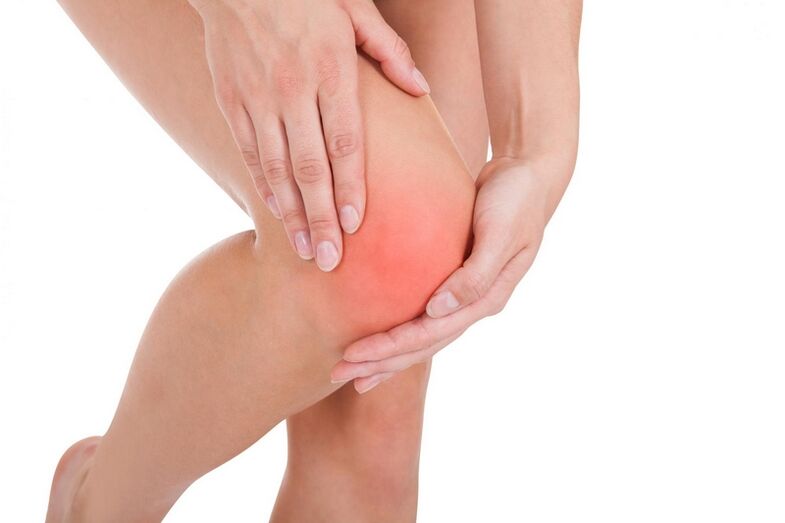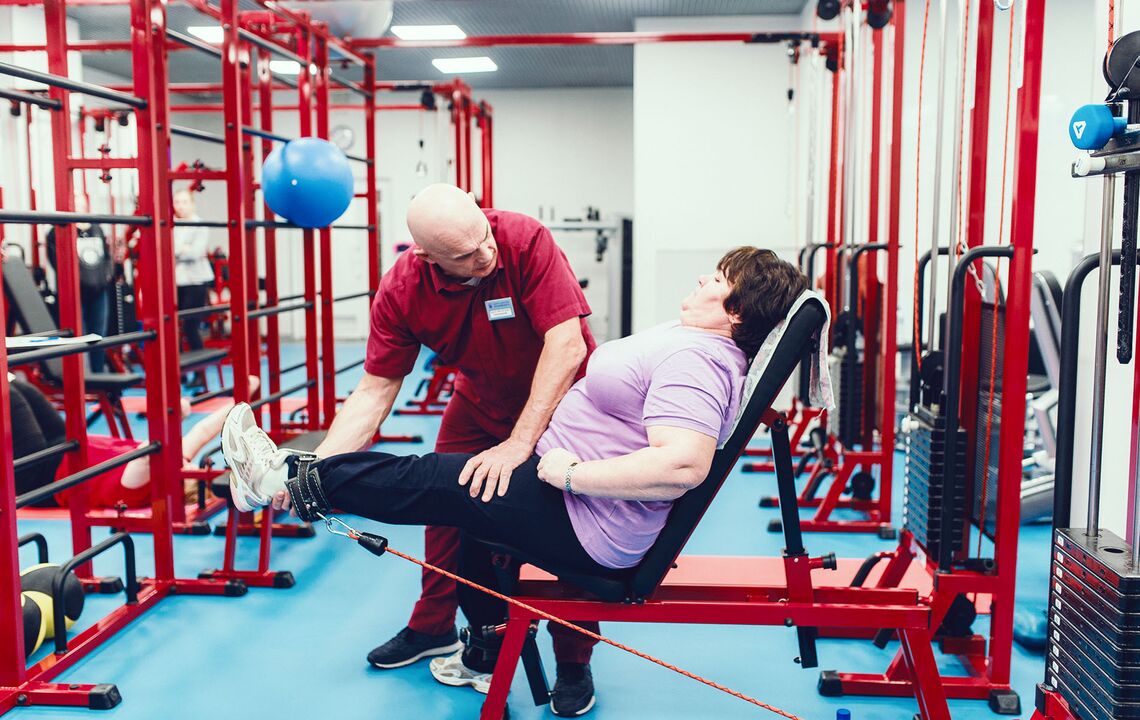Osteoarthritis of the knee joint is one of the most common diseases of the musculoskeletal system and, unfortunately, the most common cause of mobility, disability and sometimes disability loss.With arthrosis, the cartilage cartilage that emphasizes the articular surface will be irreversibly affected, causing the joint to stop work and cause pain.
Officially, the disease is called "deformation of osteoarthritis";Another name is gonarthrosis (ancient Greek "mind").The knee joints are the largest joint on the human body and most often experience osteoarthritis.More rarely, the disease affects the thigh and ankle joints.
How is gonarthrosis?
Usually, a healthy cartilage is elastic and smooth, it completely covers the moving areas of the bone and allows them to spin.The cartilage also softens the stress that the bones get during walking or exercise.

When cartilage is destroyed (so arthrosis), the top layer of this elastic tissue becomes thinner.Sometimes cartilage sorts, tears arise - so the joint loses its main "shock absorbing" and "bearing".The bones begin against each other, swelling of the joints, gradually losing normal appearance and pain.
Causes of gonarthrosis and risk factors
Osteoarthritis deformities are more common in older, overweight women, but this does not mean that young and physically active people do not experience this pathology.Sometimes the development of the disease is provoked by severe physical labor or excessive stress in the gym.
The full list of causes of knee joint arthrosis is far away:
- Sports injuries - pelvic injuries, fractures and dislocation;
- Inflammatory processes in the joints and concomitant diseases;
- Metabolic disorders - Some diseases cause intraocular deposits;
- Excessive stress on the joint, including prolonged position or physical work associated with a heavy elevator;
- Uneven load on the joints due to the curve of the legs - arthrosis is more rapidly in overcrowded areas.
Much depends on genes - a person may have a hereditary predisposition to knee joint arthrosis.In such people, the genes responsible for the development and stability of cartilage tissue are violated.
There are several factors that increase the risk of gonarthrosis:
- Increased body weight.Due to the increasing load of the joint, cartilage tissue is faster;
- Over 40 years of age.Most people of this age have reduced physical activity.Due to physical inactivity, muscle atrophy, weak muscle tissue does not properly supply the joints and increases the risk of cartilage damage.
Symptoms of arthrosis
Osteoarthritis of the knee joint is not a disease that may suddenly appear.This calls himself in advance: it all begins with a slightly pain in the knee walking.Pain can be increased if you stand above the stairs.Usually, the knee movement hurts at the beginning of movement, then the pain disappears and returns to the joint with prolonged load.
If you neglect these symptoms and do not consult your doctor about them, the disease will start progress.Then the pain will change for continuous transition, the knee will start to hurt more during rest and swollen.When the cartilage deteriorates, the whole joint mobility will be limited.
Some notice that the knee "reacts" to the weather changes.This really happens - the nerve endings in the joint capsule are susceptible to atmospheric pressure changes.
The following symptoms are characteristic of gonarthrosis:
- Knee pain during movement and walking;
- Morning firmness in the knee joint when the movement range is minimal;
- Knee edema;
- Dry and coarse crushing sound in motion - this sound occurs due to the friction of the articular surfaces.
As the disease develops, the symptoms change:
- Pain will even give you a rest;
- The joint becomes deformed and loses its functions;
- Due to the deformation of the knee, walking will change.
The degree of gonarthrosis
There are 3 stages of knee arthrosis development.
First degreeDisease - almost asymptomatic.It begins with the first manifestation of the disease - almost painless, for example, fatigue in the legs - and continues until the first bone deformities appear.If the knee has changed the form due to synovitis - that is, due to the accumulation of fluid in the joint, but the intraicular cartilage is not damaged, the disease is still in 1 stage.

2nd degreeIt is characterized by progressive changes in bone tissue.Outwardly, the knee can look the same as the stage 1 - deformed and increased in size.Pain increases: In addition to the incoming pain that occurs during movement, the affected knee is added to the cramp (cramping).The joint becomes less mobile, difficult to squat and walk on uneven surfaces.
3rd degreeThe degree of gonarthrosis is the most painful.At this point, the cartilage tissue is almost left, and if the disease is severe, the bones can grow together.Then the joint becomes completely immobilized, and the person should only move with the help of a khakun or stick.Usually, at this stage, doctors have sentenced the endoprosthetics of the damaged joint.
Important: Only your doctor can determine the exact degree of disease development.Occasionally, with mild symptoms, the disease has a serious effect on the cartilage membrane - therefore, for an accurate diagnosis, additional examinations are usually performed:
- Radiography - To see whether the cartilage surfaces are deformed and in what condition the joint space is;
- CT or MRI - for more detailed studies.
How is it diagnosed and treated with gonarthrosis?
The first thing to remember is that timely diagnosis and early treatment will help stop the disease from the beginning.Thus, the first discomfort in the knee joint is a good reason to see a doctor and check.
Doctors are diagnosed with osteoarthritis, which is based not only on medical history, complaints and in the current state of the knee joint.The results of additional studies also play an important role - they are often prescribed to determine the severity of gonarthrosis and disease.
To accurately diagnose the knee joint arthrosis, doctors usually prescribe:
- Radiography.If the knee begins abnormal processes - for example, the deposits of calcium crystals or bone tumors appear in the joint capsule - these changes will be visible in the photos.Doctors most often prescribe radiological examinations, but without a thorough examination of the knee joint, its mobility and its supporting muscles, the picture is incomplete;
- Ultrasound - It can be used to evaluate the condition of soft tissues that are surrounded and emphasize the joint.Ultrasound fills the results of radiography so that your doctor can make changes not only in bone structures but also in tissues;
- MRI - Magnetic -resonance imaging.MRI is prescribed for knee pain complaints if the doctor suspects damage to mensky, ligament or tendon;
- Arthroscopy is an invasive examination in which the joint cavity is checked from the inside using the camera.The cameras are inserted with small wounds on the skin;With these same wounds, doctors can perform minor manipulations - for example, to remove a piece of crushed cartilage, partially smooth in uneven cartilage tissue, etc.
Arthrosis treatment is usually carried out by medication, trying first to relieve pain, improve joint mobility and restore the ability to move.Arthrosis causes irreversible changes in cartilage tissue - therefore, it is not possible to speak for complete healing.But it is possible to stop the progression of the disease - and thus slow down the tissue destruction.
This is the standard treatment of Gonathross:
- Local remedies - patches, creams, ointments and gels;
- Painkillers;
- Anti -inflammatory agents, especially non -steroidal.Their use is considered a "gold standard" of medicine, but such drugs destroy the mucous membrane of the stomach;
- Blockades and chondroprotectors - medications whose effect is seen only after long use;
- Rarely - physiotherapy and sanatorium treatment.
There are recommendations to wear orthopedic knee pads to support the joint and reduce pain.But all of the above methods are passive impact methods on the functioning of the joint.
This treatment relieves only some symptoms - neutralizes pain, inhibits inflammatory processes, etc.The disease itself continues progress, gradually destroying the joint.At the last stage of osteoarthritis, people lose not only the ability to work but also to move.In such cases, the joint should be prosthetic - that is, the artificial structure should be inserted into the article.Such surgery does not undergo trace without leaving and imposes its own restrictions - and therefore reduces the quality of life.
The methods of active influence on the joint have a completely different effect, using the body's own resources, restoring muscle tone, which supplies the joint with blood and nutrients.Such treatment is most effective if it is performed under the supervision of qualified and experienced physicians.
Treatment of gonarthrosis from kinestrite
Kinestherapy, that is, movement therapy activates its own body strength.Properly selected load allows you to work effectively with the necessary muscles and muscle corset strengthens, improve joints and cartilage.
Kinestripia treatment begins with a thorough examination and, inevitably, myophysical testing.Kinesterapist examines the condition of the knee pain, analyzes the condition of muscle tissue, tendon and ligament.Depending on the data of ultrasound, CT, MRI and radiography, the degree of gonarthrosis is determined and a therapeutic exercise program is drawn up.
Classes are held on a multifunctional simulator - a ownership simulator that has a special design.Exercises are performed so as to prevent excessive stress on the joints and only work on the muscles that need to be strengthened and developed.Initially, patients are prescribed underground joint gymnastics - it consists of exercises, without weight.
The therapeutic effect of kinestherapy is provided by the restoration of blood microcirculation and the improvement of lymphatic drainage.The cartilage gets more nutrition, the development of arthrosis slow down until complete stops, and the biomechanics of the articular joint are fully restored.
Serious disease such as knee joint arthrosis cannot be neglected.The best way to avoid this is a healthy lifestyle: a balanced diet, physical activity.But if problems with joints have already begun, you should not wait for serious warning signs - you should seek help from experienced physicians for the first symptoms.


























